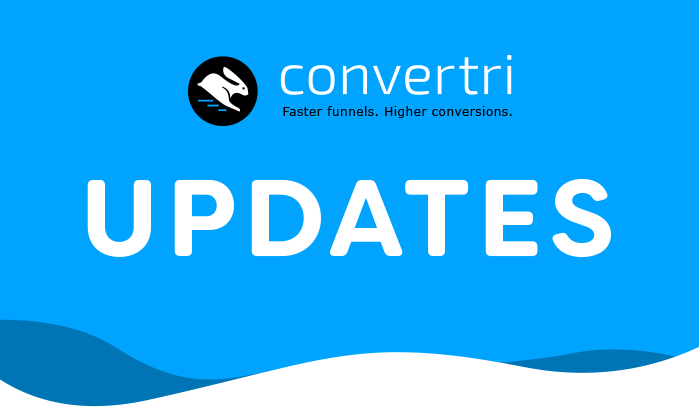The Art Of The Upsell
How many times have you walked into – or even just passed by – McDonald’s, maybe just to grab a small fries, or a bottle of water, or just to meet someone…
…And walked out the door blinking in the sunlight, carrying three bags stuffed with five hamburgers, two kids meals (you are childless, by the way), a supersize Coke and a new coffee loyalty card with two stamps?
If you’re like me, about three dress sizes’ worth. That’s how many times.
We’re fat because of upsells (and salt, and sedentary habits… but still). Companies use the art of the upsell to get us to buy more, and more, and more.
Want to stop drowning your sorrows in ketchup and start supersizing your own customers, so you can afford a meal that isn’t packaged in paper?
Let’s find out how.
What is an Upsell?
An upsell is whenever a customer is offered an add-on or more expensive alternative to a main offer.
Examples include accessories, refills, upgrades, luxury versions or a higher quantity.
“Do you want fries with that?” is an upsell. “Those leather seats only cost $299 more,” is also one, and branded refillable cups – which come with a small discount on hot drinks – are also an upsell.
The flip version is a downsell, which is triggered when the customer rejects the main offer and can choose a smaller quantity or cheaper version.
But an upsell is always either more expensive, or requires the main product to work.
Why Upsells Work
The point of an upsell is to capitalise on a buyers’ frame of mind. If someone’s already converted on a main offer, and still have their wallet open (so to speak), it’s much easier for them to buy something else.
This is because you’ve already proven your case. They trust you, see the value in what you’re selling and already put their money where their mouth is, so they can justify far fewer objections.
In some cases, you can price your main offer so low that you actually lose money on it – this is called a “loss-leader” – in order to attract more customers, then sell them a compelling upsell to make up that gap.
Printers are a great example of loss-leader pricing. You can buy an okay printer for $50, and be fairly certain that company is losing money. However, each ink refill – a recurring upsell – is around $25.
(You don’t want to know how cheap ink is to make. It’s extremely upsetting.)
Like razor blades and toothbrush heads, printer ink is where the company makes money. This is also why each model needs slightly different refills, and there’s no one-size-fits-all product: once you buy the company’s loss-leader, they need a way to tie you into their specific upsell, and that one only.
See, customer loyalty and retention are benefits, but if they’re not delivering reasonable profit on their own, they only have value in an upsell chain – which means if ink was cheaper, printer companies would have to increase costs up the chain (printers) or down the chain (like paper).
And it would be a huge gamble for a breakthrough printer company to slash ink costs, as well as offer a competitively priced printer, and rely on loyalty generated on goodwill to generate profit.
That’s not to say there’s no space in the market. Please. Anyone?
What’s My Upsell?
Your first task is finding out what should constitute your upsell offer.
It might be obvious from your product, or what you know about your industry. But here are some examples:
- Refills – for physical products such as razors, toothbrush heads, food and beverages, stationery items, cosmetics and beauty and healthcare items
- Subscriptions – for magazines, blogs, newsletters and other content-driven products, membership areas, coaching and consulting
- Personal service – a weekly Skype call, personal mentoring, a private Facebook group, a hand-crafted or personalised item
- Accessories – cases, merchandise such as t-shirts or baseball caps, care and maintenance products like polish or spray cleaners
- Luxury – higher quality materials, larger models or more recent innovations
- Influence – “beta” membership, ground floor investments, early bird status, having your name on a list of founders
- Convenience – faster shipping, delivery on a day of your choice, assembly and removal of previous item
- Safety – insurance, extra packaging, premium customer support
- Quantity – similar products, extra items, buy one and get the second half price
Your upsell will depend on the maximum value you can give your customers. If you’re selling a Mercedes car, those customers won’t place much value on a baseball cap – but you might sway someone who’s just bought a Mercedes keyring, for example.
And if you’re selling toothbrushes, your customers might be more interested in a done-for-you subscription – so they don’t have to remember to change their heads every 3 months – than a half-price razor.
So you’ll need to know what kind of mood your customers are in at the time of purchase, as well as their problems and interests.
How to Upsell
The best time to sell somebody something is when they’ve just bought something else. A study from Marketing Metrics discovered that the probability of converting a cold lead is between 5% and 20%, but the probability of selling to an existing customer is 60% to 70%.
This is because you’ve established trust, and a certain sense of loyalty. The awkward handshake is over, and your customers already know what to expect.
There’s many ways you can introduce your upsell:
- Live chat
- Phone call
- Redirect after checkout
- Retargeted Facebook ads
- …And more
But whatever method you use, the core principles are the same.
If you can segment your list, you may be able to exploit data like past purchases, browsing history and preferences to target different upsells to different people.
Personalisation is key, and will increase upsells in most cases. Choose an upsell that will appeal to that person (or segment), and tell them why you think it’s perfect. Don’t just use the FIRSTNAME field – tailor the whole deal to their inbox, and you’ll be more likely to increase conversions.
Researchers from Accenture Interactive say 75% of customers are more likely to use a retailer who knows their purchase history and customizes recommendations based on that history. Knowing their name is just a bonus.
Here’s a few more ideas for personalising your upsells:
- Use an informal tone – as if the email is sent personally, because you know it’s perfect for them
- Fill in the “from” field – don’t use a “no reply” mail ID, but send it from your company or your own name
- Exploit timing – experiment with immediately after purchase to a couple of days post-purchase, and find the best time to send out your upsells
- Reference the previous purchase – “you like X? Then you’ll love X” is a powerful reminder to the customer that they’ve already bought, and are pleased with the last product. Why not get another?
Upsells are a great way to get your customers coming back for more – and it’s easy to make them in Convertri and trigger your important offer messages via page redirects, or even exit intent.
(You can even use dynamic text to reference previous purchases – click here to find out how.)
The most important part of the upsell process is to keep experimenting. The perfect upsell for one person won’t suit someone else – so make sure to offer a wide variety and change your offer regularly to make the most of your customer base and increase conversions.





